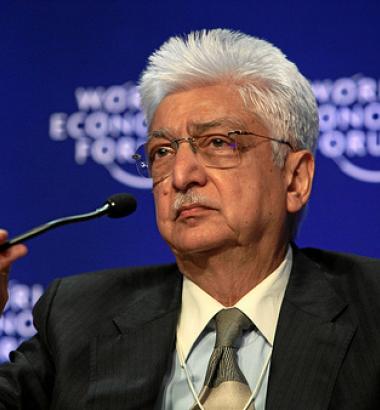
India’s Billionaire Boom
THE SOURCE: “Where Do India’s Billionaires Get Their Wealth?” by Aditi Gandhi and Michael Walton, in Economic and Political Weekly, Oct. 6, 2012.

THE SOURCE: “Where Do India’s Billionaires Get Their Wealth?” by Aditi Gandhi and Michael Walton, in Economic and Political Weekly, Oct. 6, 2012.
Indian billionaires are a new and powerful breed. There were only two in the mid-1990s; today there are 46. Entrepreneurs and heirs alike are reaping the rewards of India’s burgeoning economy. Is the billionaire boom a sign of healthy business dynamism, or does it suggest that a tiny cabal of oligarchs is taking over?
The evidence is mixed but troubling. Using data compiled by Forbes magazine, economists Aditi Gandhi and Michael Walton, of the New Delhi–based Center for Policy Research, generated an overview of Indian billionaires’ social and business backgrounds. Some are breaking the caste mold—18 of the 46 come from outside the traditional merchant classes. A small number, including Shiv Nadar, the founder of technology and outsourcing giant HCL, rose from lower and “backward” castes. Only one Muslim, Wipro chairman Azim Premji, has penetrated the uppermost echelons of the business elite. (Almost 15 percent of India’s population is Muslim.) Overall, the billionaires’ wealth equals about 10 percent of the nation’s gross domestic product, more than twice the proportion of GDP claimed by billionaires in China, South Korea, and other developing countries.
To do the bulk of their analysis, Gandhi and Walton split the billionaires into two groups based on how they made their fortunes. One group struck it big in “rent-thick” industries such as media, telecommunications, real estate, mining, and cement—sectors in which government favoritism and other forces often allow businesses to reap extra profits. The other group prospered in industries with sound regulation and less government intervention, such as information technology and software, finance, manufacturing, and pharmaceuticals.
Walton and Gandhi found that while only 20 of the 46 billionaires were primarily involved in rent-thick industries, 60 percent of billionaire wealth was generated in these sectors. And that share has grown in the past dozen years. Not every rent-thick fat cat is crooked, of course, but the potential for corruption is clear. Massive scandals in real estate and construction have captured headlines, and India’s Supreme Court recently forced cell phone companies to give up licenses for the wireless spectrum granted by the government in sweetheart deals.
Collusion between the state and the super-rich rarely ends well. In East Asia, Gandhi and Walton argue, rampant cronyism contributed to the financial crisis of the mid-1990s. But there are hopeful precedents too: The excesses of America’s robber barons in the late 19th century sparked a wave of reform. Popular support for a corruption crackdown abounds in India. The question is whether the state is strong enough to police its rent-seeking business big shots. If it can’t do the job, the authors warn, India will face a future of stunted growth, rising inequality, and feeble governance.